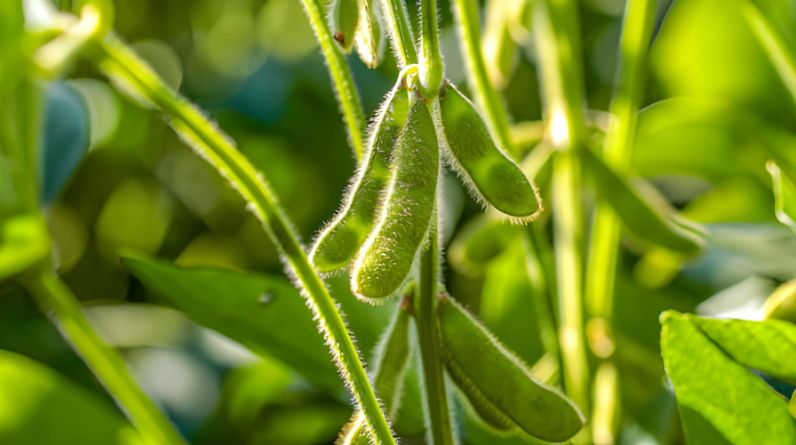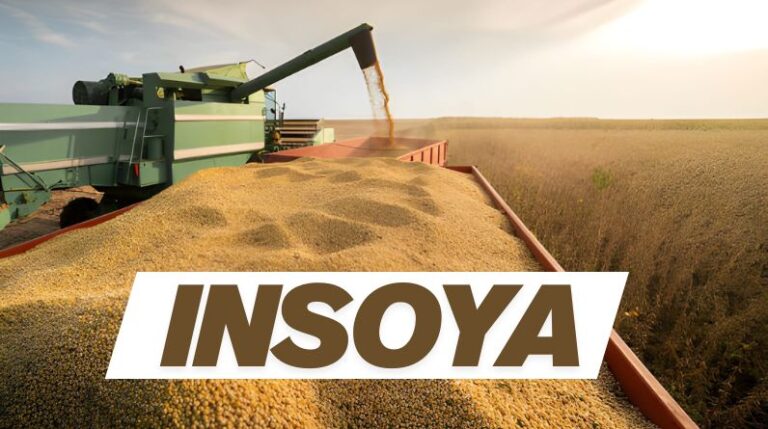The plant-based protein market is crowded with promises, but few products deliver on both performance and sustainability like Insoya. As consumers become increasingly aware of their nutritional choices’ environmental and health impacts, Insoya has emerged as a game-changer in the sustainable nutrition space. But what exactly makes this soy-based protein stand out in an oversaturated market?
This comprehensive guide cuts through the marketing noise to deliver actionable insights about Insoya—from its impressive nutritional profile to practical implementation strategies that actually fit into real-world lifestyles.
What Is Insoya? Understanding the Foundation
Insoya represents a modernized approach to soy-based nutrition, engineered specifically for maximum protein bioavailability and minimal environmental impact. Unlike conventional soy products that often sacrifice taste or texture, Insoya utilizes advanced processing techniques that preserve essential nutrients while enhancing palatability.
At its core, Insoya is derived from premium, non-GMO soybeans processed to deliver complete amino acid profiles comparable to animal proteins. This makes it particularly valuable for individuals requiring high-quality protein without the environmental baggage of traditional animal agriculture.
The Science Behind Complete Plant Protein
What sets Insoya apart is its complete amino acid profile. While many plant proteins lack one or more essential amino acids, Insoya provides all nine in optimal ratios for human nutrition. This biological completeness means your body can utilize the protein efficiently for:
- Muscle protein synthesis – Critical for athletes and active individuals
- Cellular repair and maintenance – Supporting overall body function
- Enzyme and hormone production – Essential for metabolic processes
- Immune system support – Strengthening your body’s natural defenses
Nutritional Breakdown: What You’re Actually Getting
Understanding the nutritional density of Insoya helps you make informed dietary decisions. Here’s a detailed look at what a typical serving delivers:
| Nutrient | Per 100g | Per 30g Serving | % Daily Value |
|---|---|---|---|
| Protein | 85g | 25.5g | 51% |
| Calories | 380 kcal | 114 kcal | 6% |
| Carbohydrates | 3g | 0.9g | 0.3% |
| Dietary Fiber | 8g | 2.4g | 9% |
| Fat | 2g | 0.6g | 1% |
| Iron | 18mg | 5.4mg | 30% |
| Calcium | 280mg | 84mg | 6% |
| Isoflavones | 120mg | 36mg | * |
*No established daily value for isoflavones
Why These Numbers Matter
The 95% digestibility rate means your body can actually absorb and utilize nearly all the protein you consume—a metric that rivals even whey protein at 97%. This high bioavailability translates to better muscle recovery, sustained energy, and improved satiety compared to lower-quality protein sources.
The Environmental Case: Beyond Personal Health
Every food choice carries an environmental cost. The question is: how much? When comparing Insoya to traditional animal proteins, the differences are staggering:
Resource Consumption Comparison
- Water Usage: Producing 1kg of soy protein requires approximately 2,500 liters of water, compared to 15,400 liters for the same amount of beef protein—an 84% reduction
- Greenhouse Gas Emissions: Plant-based proteins generate 90% fewer emissions than equivalent animal proteins
- Land Requirements: Soy cultivation uses significantly less land per gram of protein than livestock farming
- Deforestation Impact: While soy has been criticized for deforestation, Insoya’s commitment to responsible sourcing and non-GMO certification addresses these concerns directly
The Ripple Effect on Food Systems
By choosing Insoya, consumers participate in a larger systemic shift. Each purchase supports:
- Regenerative Agriculture: Farming practices that improve soil health and biodiversity
- Local Economies: Partnerships with regional farmers create sustainable livelihoods
- Reduced Antibiotic Use: Plant-based proteins eliminate the need for antibiotics common in industrial animal agriculture
- Water Conservation: Critical in drought-prone regions facing water scarcity
Practical Applications: Making Insoya Work for Your Lifestyle
Knowledge without application remains theoretical. Here’s how to effectively integrate Insoya into different lifestyle contexts:
For Athletes and Fitness Enthusiasts
Post-workout recovery demands fast-absorbing protein. A 30g serving of Insoya powder mixed with water or plant milk delivers 25g of protein within 30 minutes post-exercise. This timing optimizes muscle protein synthesis during the critical recovery window.
Pro Tip: Combine with a fast-digesting carbohydrate source like banana or dates to enhance protein uptake through insulin response.
For Busy Professionals
Time-starved professionals can leverage Insoya’s versatility:
- Morning Smoothies: 3-minute breakfast providing sustained energy without the mid-morning crash
- Desk-Side Snacks: Ready-to-eat Insoya products prevent unhealthy vending machine choices
- Meal Prep Solutions: Insoya-based meatballs or burgers batch-prepare easily for weekly meals
For Families Transitioning to Plant-Based Eating
The versatility of Insoya makes family adoption smoother. Products that absorb flavors well integrate into familiar dishes:
- Taco Nights: Insoya crumbles seasoned with traditional spices replace ground beef
- Pasta Dishes: Insoya meatballs maintain texture and provide protein density
- Breakfast Upgrades: Protein pancakes or smoothie bowls appeal to children while boosting nutrition
Cost-Benefit Analysis: The Economic Reality
Price often becomes the determining factor in dietary choices. Let’s examine the real economics of Insoya compared to traditional proteins:
| Protein Source | Cost Per 100g Protein | Environmental Cost | Health Benefits |
|---|---|---|---|
| Insoya | $0.94 – $1.41 | Low | High (Heart health, cholesterol reduction) |
| Chicken Breast | $1.50 – $2.20 | Moderate | Moderate (Lean protein) |
| Ground Beef | $1.80 – $3.00 | Very High | Low (Saturated fat concerns) |
| Whey Protein | $0.75 – $1.25 | High | High (Fast absorption) |
| Salmon | $4.50 – $7.00 | Moderate-High | Very High (Omega-3s) |
Prices based on average US retail costs, 2025
Hidden Savings Beyond Price Tags
The economic advantages extend beyond immediate grocery bills:
- Healthcare Costs: Research indicates plant-based diets reduce risk of chronic diseases, potentially saving thousands in medical expenses
- Longer Shelf Life: Insoya powder stores longer than fresh meat, reducing food waste
- Versatility Savings: One product replaces multiple protein sources, simplifying shopping and storage
Common Mistakes When Switching to Insoya (And How to Avoid Them)

Mistake #1: Going All-In Too Quickly
Your digestive system needs time to adjust to increased fiber and different protein structures. Start by replacing one meal per day, gradually increasing over 2-3 weeks.
Mistake #2: Ignoring Thyroid Medication Timing
If you take thyroid medication, consume Insoya at least 4 hours apart to avoid interference with hormone absorption. This simple timing adjustment prevents unnecessary complications.
Mistake #3: Expecting Identical Taste and Texture
While Insoya’s processing creates excellent palatability, expecting it to taste exactly like beef sets unrealistic expectations. Approach it as its own food category with unique characteristics to appreciate.
Mistake #4: Neglecting Complementary Nutrition
While Insoya provides complete protein, a balanced diet requires variety. Continue consuming diverse fruits, vegetables, whole grains, and healthy fats for optimal nutrition.
Safety Considerations and Who Should Exercise Caution
Transparency about limitations is crucial for informed decisions:
Soy Allergy Concerns
Approximately 0.3% of adults have soy allergies. If you’ve never consumed soy products, start with a small amount (5-10g) and monitor for reactions over 24-48 hours before regular consumption.
Medication Interactions
Soy isoflavones may affect absorption of certain medications including:
- Thyroid hormones (levothyroxine)
- Some antibiotics (fluoroquinolones)
- Certain osteoporosis medications
Always discuss significant dietary changes with your healthcare provider if you take prescription medications.
Hormonal Considerations Demystified
Despite persistent myths about soy’s estrogenic effects, research from the American Journal of Clinical Nutrition (2021) confirms that moderate consumption (25-50g protein daily) doesn’t significantly impact hormone levels in healthy adults. The phytoestrogens in soy are structurally different from human estrogen and function differently in the body.
Where to Buy Insoya: Global Availability Guide
Accessibility varies by region, but Insoya has expanded significantly across major markets:
United States
- Amazon US: Widest selection, typically $8-15 per container
- Whole Foods Market: Premium brands, $10-18 per container
- Target: Growing selection, $7-12 per container
- Walmart: Budget options, $6-10 per container
United Kingdom
- Amazon UK: Extensive range, £6-12 per container
- Holland & Barrett: Health-focused brands, £9-16 per container
- Tesco/Sainsbury’s: Mainstream options, £7-14 per container
Canada
- Amazon Canada: Good selection, CAD $12-20 per container
- Loblaws: Store brand options, CAD $8-15 per container
- Costco: Bulk purchases when available, CAD $15-25
Australia
- Woolworths/Coles: Expanding range, AUD $10-20 per container
- Chemist Warehouse: Health brands, AUD $14-24 per container
- iHerb Australia: Import options, AUD $12-22 per container
The Future of Insoya and Plant-Based Nutrition
Industry analysts project continued growth in the plant-based protein sector, with innovative products and improved accessibility on the horizon. Insoya’s commitment to research and development suggests upcoming releases will address current limitations while maintaining core sustainability principles.
Expected developments include:
- Enhanced flavor profiles through fermentation techniques
- Functional foods combining protein with additional health benefits
- Improved sustainability metrics via regenerative agriculture partnerships
- Greater affordability as production scales and technology advances
Final Thoughts: Is Insoya Right for You?
Insoya represents more than just another protein powder—it’s a practical solution for individuals seeking to align their nutritional needs with environmental values without sacrificing performance or taste.
The decision to incorporate Insoya into your diet should consider:
- Your protein requirements based on activity level and health goals
- Dietary restrictions and potential interactions with existing health conditions
- Budget constraints and willingness to invest in sustainable options
- Taste preferences and culinary flexibility
- Environmental priorities and commitment to sustainability
For most individuals, Insoya offers a compelling combination of nutritional completeness, environmental responsibility, and practical versatility that makes it worth exploring. Start small, experiment with different applications, and allow your body time to adapt. The journey toward sustainable nutrition doesn’t require perfection—just consistent, informed choices that move you closer to your health and environmental goals.
Whether you’re an athlete seeking optimal recovery, a busy professional needing convenient nutrition, or a family transitioning toward plant-based eating, Insoya provides the foundation for sustainable dietary change that actually sticks.


